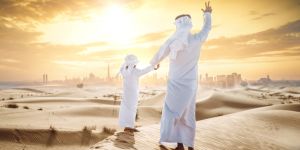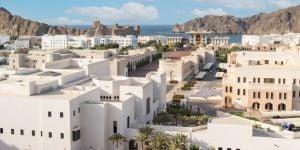
If you are relocating to Oman, it is important to understand how transportation works in the country. Generally, Oman is still very car-centric, with most expats and locals preferring the convenience of traveling by car. Trains are still to be developed, but bus services have been implemented during the last decade.
The road infrastructure in Oman
Oman boasts a comprehensive and modern road network that enhances connectivity between its urban and rural locales, significantly boosting transport efficiency and safety for residents, visitors, and businesses. Key arteries include:
- Muscat Expressway: This multi-lane motorway cuts through the capital, Muscat, linking various parts of the city and facilitating smooth traffic flow to other regions.
- Sultan Qaboos Road: A crucial thoroughfare in Muscat running parallel to the coastline, it connects major zones such as the airport, commercial districts, and residential areas.
- Al Batinah Coastal Road: Stretching from Muscat to the northern regions, including the Al Batinah Governorate, this road is vital for trade and tourism, providing access to ports and industrial zones.
- Salalah-Tumrait Road: Connecting the southern city of Salalah with the rest of Oman, this highway is pivotal for local and tourist travel within the Dhofar region.
- Nizwa-Sur Road: Linking the interior city of Nizwa with the coastal city of Sur, this route passes through key towns and grants access to notable tourist spots like Wahiba Sands.
Additionally, Oman's mountainous areas, especially the Al Hajar range, are served by well-maintained mountain roads. Routes like the one to Jebel Akhdar not only facilitate access to high-altitude areas but also offer breathtaking scenic views.
Good to know:
The road to Jebel Akhdar requires a 4WD car.
Oman's roads are generally well-constructed, have high-quality asphalt, and are clearly signposted. The government places significant importance on road safety, and many highways are equipped with safety features such as barriers, signs, and speed cameras.
The road network contains many bridges and tunnels, especially in mountainous areas, promoting more fluid travel and improving communication. Oman has many rings in urban areas that help create traffic flow. Some roundabouts are important landmarks and serve as key navigation points. The government has invested in road infrastructure and modernization.
Good to know:
The road infrastructure is usually stable, but extreme weather conditions, such as heavy rains and sudden floods, can sometimes cause malfunctions. The authorities are equipped to process such situations and take measures to respond to emergency situations.
Airports in Oman
Oman has several airports serving both domestic and international flights, catering to the growing needs of tourism and business travel in the country.
Muscat International Airport
Muscat International Airport is Oman's largest and busiest airport and the main gateway for international travelers. It is the main hub for Oman Air, the national airline, and SalamAir, a low-cost airline. The airport has a modern passenger terminal with the latest facilities, including duty-free shops, restaurants, lounges, and car rental services. There is also a cargo terminal and extensive aircraft maintenance capabilities. Muscat International Airport has two parallel runways capable of handling larger aircraft.
Good to know:
Most international airlines fly to Muscat International Aiport.
Salalah Airport
Salalah International Airport is the second-largest airport in Oman. It serves the Dhofar Special Region, known for its unique climate and tourist attractions, especially during the Khareef (monsoon) season. The airport has a modern terminal with amenities such as duty-free shops, restaurants, and lounges. It operates domestic and international flights, including seasonal charters. The airport has one runway that caters to both passenger and cargo flights.
Several smaller local airports
The Duqm airport serves the rapidly developing Duqm Special Economic Zone, which is a key area for industrial and economic development in Oman. Duqm International Airport has a modern terminal serving both domestic and international flights, primarily supporting the region's economic activity and growing tourism sector. The airport has one runway and is equipped to handle passenger and cargo traffic.
Sohar International Airport supports industrial and commercial activities in the Sohar region, which includes the Sohar Free Economic Zone and the Sohar Industrial Port. The airport has a passenger terminal and a cargo service. It mainly serves domestic flights and some international routes.
Khasab Airport is located in Musandam. It primarily serves domestic flights and provides access to the Musandam Peninsula, known for its rugged fjords and unique landscapes. The Ras Al Hadd airport is currently under construction and aims to serve Oman's eastern region, particularly an area known for its turtle nesting sites and coastal tourist attractions.
The bus network in Oman
Oman's public bus system is a vital component of the country's transport network, providing affordable and efficient transport for residents and visitors. Oman is constantly developing its public transport infrastructure, with plans to expand bus routes and improve the quality of services. This includes improving urban networks in growing cities and developing new intercity routes.
Public buses are a cost-effective option, but usage varies, and governments are working to raise public awareness and encourage more people to use public transport.
Buses are modern, air-conditioned, and equipped with amenities such as free Wi-Fi and accessibility. features for passengers with disabilities. Mwasalat also provides bus services within Salalah, especially during the Khareef season, when many tourists visit.
Oman's bus system is primarily operated by Mwasalat, a state-owned public transport company that offers a wide range of services, including urban, intercity, and cross-border routes.
Good to know:
In the capital, Muscat, Mwasalat operates an extensive network of bus routes connecting major residential areas, commercial centers, and major tourist attractions.
Intercity buses
As mentioned above, Mwasalat operates intercity bus services connecting Muscat with other major cities and towns across Oman.
Muscat to Salalah is a long-distance route connecting the capital with the southern city of Salalah. Muscat to Sohar is also a frequently used route, as Sohar is an important industrial center. Muscat to Duqm supports the growth of this new economic zone.
Mwasalat also operates international bus services to neighboring countries, improving regional connectivity. Muscat-Dubai is a popular route for travelers between Oman and the United Arab Emirates (UAE). Muscat-Abu Dhabi is another key route connecting Oman to the United Arab Emirates.
Private buses
Besides Mwasalat, there are also private bus and minibus operators in Oman, offering services on various routes within and between cities. These services may vary in frequency, comfort, and price.
Bus stations
The main bus stations in cities such as Muscat, Salalah, Sohar, and Nizwa serve as hubs for urban and intercity transportation. These terminals are equipped with amenities such as ticket counters, waiting areas, toilets, and sometimes food outlets. There are many bus stops and smaller stations throughout the city network, often with clear signs and route information.
Payment options
Mwasalat offers several payment options, including cash and smart cards (Mwasalat Card). Tickets can be purchased at terminals, on buses, or online. The fare structures vary depending on the route and distance traveled.
City bus fares are generally cheap, making them an affordable option for everyday travel.
Many of Mwasalat's buses are equipped with features to assist passengers with disabilities, such as low-floor designs and reserved seats.
Moreover, Mwasalat has integrated technology into its services, providing real-time bus tracking and route information through its website and mobile app, allowing passengers to plan their journeys more efficiently.
Taxis in Oman
Oman's taxi service is in public transport mode, providing convenience and flexibility to residents and visitors. It is the most common type of taxi in Oman and can be easily recognized in orange and white. These taxis are often owner-operated and can be flagged down on the street or found at taxi stands in cities and towns. You can also find them close to markets, shopping malls, hotels, and other busy areas.
Traditionally, these taxis do not use meters, and fares are usually negotiated before the journey.
Good to know:
In recent years, there has been a trend towards using meters, especially in Muscat. They are available throughout Oman, including cities such as Muscat, Sohar, and Salalah, as well as smaller towns.
Airport taxis
Airport taxis are available at major airports, such as Muscat International Airport. They are generally large and more comfortable. These taxis generally use meters and are restricted.
Reliable app-based taxi services
App-based taxi services such as Mwasalat (a government-licensed transport company), Otaxi, Tasleem, and other local apps are becoming increasingly popular, especially in urban areas. They are mainly available in major cities such as Muscat and Salalah.
Shared taxis
There are also shared taxis, commonly known as Baisas buses. They don't operate on a set schedule. They follow a specific route and stop whenever required by the passengers. They are usually found on the main roads within cities and also on the major highways between different cities.
Taxi fares
Metered taxis, which include airport and app-based taxis and some of Muscat's new standard taxis, offer more transparent pricing. The starting fare for a metered taxi is usually around 1 OMR, with additional charges depending on the distance traveled. Cash is the most common payment method for traditional taxis.
Hotel taxis
Oman's hotels offer taxi services for guests through partnerships with taxi companies and their fleets. These taxis are more practical and more expensive, in principle, at a higher rate. For those who are looking for premium experiences, some companies offer luxurious taxi services with high-level vehicles and professional drivers.
Traveling by taxi
Oman is a conservative country, so it's important to dress modestly and show respect to the driver.
Many local taxi drivers speak basic English, but it's useful to be prepared to write down your destination in Arabic or clearly explain where you are.
Tipping is not required but is appreciated. It is common to round up the cost or add a small amount.
If the taxi isn't equipped with a meter, always agree on the fare amount before starting the ride.
For added safety and convenience, especially in urban areas, consider using an app-based or metered airport taxi.
Although taxis are available at night, fares can be higher, so it is advisable to book in advance if possible, especially in less crowded areas.
Good to know:
Solo women travelers may prefer to use app-based taxi services or book a taxi from a reliable company to ensure their safety. There are also a few taxis driven by females, but only for solo women and families.
Useful links:
We do our best to provide accurate and up to date information. However, if you have noticed any inaccuracies in this article, please let us know in the comments section below.








